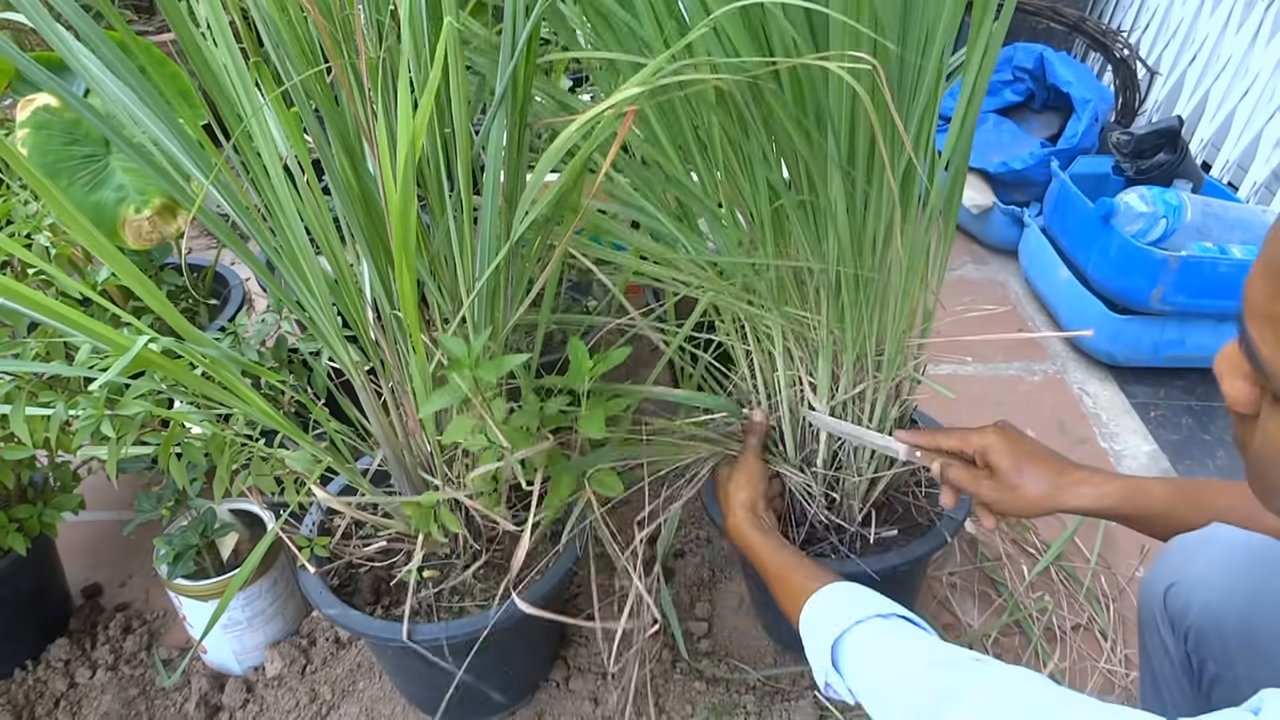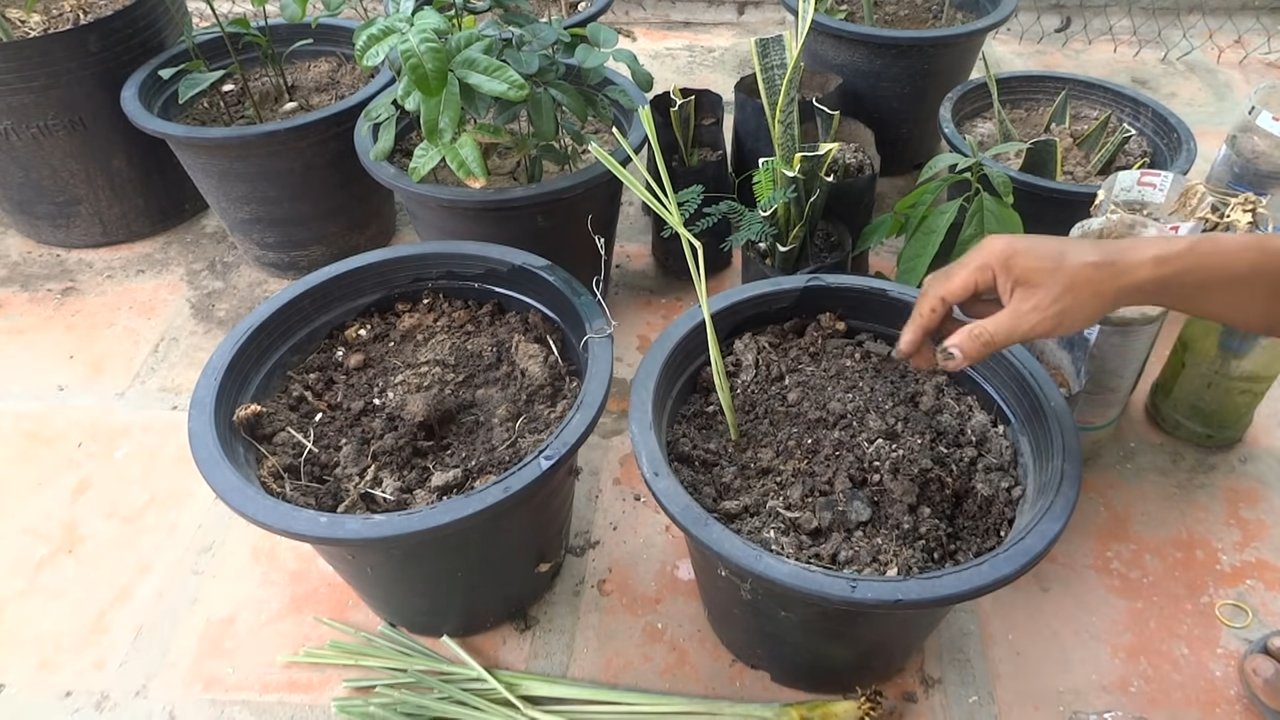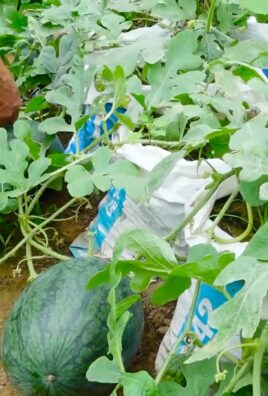Grow Lemongrass Indoors Easily and transform your kitchen into a fragrant, flavorful oasis! Have you ever dreamt of snipping fresh lemongrass right from your windowsill, ready to infuse your dishes with that signature citrusy zing? Well, dream no more! This DIY guide will unlock the secrets to cultivating this tropical treasure within the cozy confines of your home.
Lemongrass, also known as Cymbopogon, boasts a rich history, deeply rooted in Asian culinary and medicinal traditions. For centuries, it’s been a staple ingredient in Thai, Vietnamese, and Indian cuisine, adding a vibrant depth to soups, curries, and teas. Beyond its culinary prowess, lemongrass has also been revered for its therapeutic properties, believed to possess anti-inflammatory and digestive benefits.
But why should *you* learn to grow lemongrass indoors easily? Imagine the convenience of having a readily available supply of this aromatic herb, eliminating those last-minute trips to the grocery store. Plus, growing your own lemongrass is not only cost-effective but also ensures you’re using fresh, pesticide-free ingredients. In this article, I’ll walk you through simple, step-by-step instructions and insider tips to ensure your indoor lemongrass thrives, bringing a touch of the tropics to your home, no matter the season. Let’s get started!

Growing Lemongrass Easily at Home: Your DIY Guide
Hey everyone! Lemongrass is not only super delicious in the kitchen but also a real eye-catcher. And the best part: You can easily grow it yourself at home! I’ll show you how. Don’t worry, it’s easier than you think!
What you need:
- Fresh lemongrass stalks (preferably from an Asian market or supermarket with intact root bases)
- A glass or a vase
- Water
- A pot
- Potting soil (a mixture of garden soil and compost is best)
- A sunny location
- Patience (but it pays off!)
Rooting Lemongrass: The First Step to Success
Before we plant the lemongrass, we first need to root it. This is super important to ensure it grows properly later on.
- Prepare the lemongrass: Choose the best-looking stalks. They should be firm and green. Cut off the top ends of the stalks, leaving only about 10-15 cm (4-6 inches). This helps the lemongrass focus on root formation.
- Place in water: Fill your glass or vase with water. Place the lemongrass stalks inside so that the lower ends are in the water. Make sure the stalks are not too deep in the water, otherwise they could rot.
- The right location: Place the glass in a bright, but not directly sunny, location. A windowsill is perfect!
- Change the water: Change the water every few days to keep it fresh and prevent bacteria from forming.
- Be patient: Now it’s time to wait! After about a week, you should see the first small roots. But it can also take a little longer, so don’t be discouraged!
Planting Lemongrass: Into the Soil!
Once the roots are about 2-3 cm (1 inch) long, it’s time to plant the lemongrass.
- Prepare the pot: Choose a pot that is large enough. Lemongrass likes to have space. A pot with a diameter of at least 15 cm (6 inches) is ideal. Fill the pot with potting soil.
- Plant the lemongrass: Make a small hole in the soil and carefully place the lemongrass inside. Make sure the roots are well-covered.
- Water it in: Water the lemongrass well after planting. The soil should be moist, but not wet.
- The right location: Place the pot in a sunny location. Lemongrass loves the sun! A south-facing window is perfect.
Caring for Lemongrass: So It Thrives Magnificently
Lemongrass is actually quite low-maintenance, but you should pay attention to a few things to make it feel at home with you.
- Watering: Water the lemongrass regularly, but avoid waterlogging. The soil should always be slightly moist. In the summer, you will probably need to water more often than in the winter.
- Fertilizing: During the growing season (spring and summer), fertilize the lemongrass every few weeks with a liquid fertilizer. This ensures strong growth.
- Pruning: Regularly cut off dry or brown leaves. This keeps the lemongrass healthy and promotes growth. You can also harvest the outer stalks if you want to use them for cooking. Just cut them at the bottom.
- Overwintering: Lemongrass is not winter-hardy. If you have it outside, you must bring it indoors in the fall before the first frost. Place it in a bright, cool location and water it less. In the spring, you can then move it back outside.
- Repotting: When the pot becomes too small, you should repot the lemongrass into a larger pot. This is usually necessary every one to two years.
Common Problems and Solutions:
Sometimes there are small challenges, but don’t worry, I’ll help you with them!
- Yellow leaves: Yellow leaves can have various causes. Either the lemongrass is getting too little water, too little fertilizer, or too little sun. Check your care routine and adjust it if necessary.
- Brown leaf tips: Brown leaf tips often indicate air that is too dry. Spray the lemongrass regularly with water to increase the humidity.
- Pests: Lemongrass is relatively resistant to pests, but sometimes aphids or spider mites can take hold. Combat them with a natural insecticide or rinse the leaves with water.
Harvesting and Using Lemongrass:
The best part comes at the end: the harvest!
- Harvesting: When the stalks are thick enough (about as thick as a pencil), you can harvest them. Just cut them at the bottom.
- Using: Lemongrass is versatile. You can use it for cooking to flavor soups, curries, and teas. You can also dry it and use it as a tea. Or you can use it as a fragrance in your home.
Additional Tips and Tricks:
- Propagation: You can also propagate lemongrass by division. Simply divide the root ball into several parts and plant them in separate pots.
- Hydroponics: Lemongrass also grows well in hydroponics. Just use a hydroponic substrate and a hydroponic fertilizer.
- Creative ideas: Use lemongrass as a decoration in your home. It not only looks beautiful but also smells wonderful.
Lemongrass in the Garden:
If you have a garden, you can also plant the lemongrass outside in the summer. However, make sure the location is sunny and the soil is well-draining. In the fall, you will have to bring it back indoors.
Lemongrass in the Kitchen:
Lemongrass is a must-have in Asian cuisine. It gives dishes a fresh, lemony flavor. You can use it in soups, curries, sauces, and marinades.
- Lemongrass Tea: Finely chop a few stalks of lemongrass and pour hot water over them. Let the tea steep for a few minutes and enjoy.
- Lemongrass Soup: Add lemongrass to your favorite soup to give it a special flavor.
- Lemongrass Curry: Use lemongrass in your curry to give it a fresh note.
I hope this guide has helped you! With a little patience and care, you can soon be harvesting and enjoying your own lemongrass. Happy gardening

Conclusion
So, there you have it! Growing lemongrass indoors is not only achievable, but it’s also a rewarding experience that brings a touch of the exotic to your home and a burst of fresh flavor to your kitchen. Forget those wilted, overpriced stalks at the grocery store. With a little patience and these simple steps, you can have a thriving supply of this fragrant herb right at your fingertips.
Why is this DIY trick a must-try? Because it empowers you to control the quality and freshness of your lemongrass. You know exactly where it came from and how it was grown, free from pesticides and long journeys in refrigerated trucks. Plus, it’s incredibly satisfying to nurture a plant from a simple stalk to a flourishing herb. Imagine the pride you’ll feel when you use your homegrown lemongrass to create a vibrant Thai curry or a refreshing lemongrass tea.
Beyond the basic method, there are plenty of ways to personalize your lemongrass growing experience. Experiment with different pot sizes to see what works best for your space. Try using a self-watering pot to simplify watering. You can even explore different varieties of lemongrass, each with its own unique flavor profile. Consider adding companion plants like basil or mint to your indoor herb garden to create a fragrant and functional ecosystem.
Don’t be afraid to experiment with different light levels and watering schedules to find what works best for your specific environment. Remember, every home is different, and your lemongrass may have its own preferences. The key is to observe your plant closely and adjust your care accordingly.
We wholeheartedly encourage you to give this DIY trick a try. It’s a simple, cost-effective, and incredibly rewarding way to add fresh flavor and a touch of greenery to your life. And most importantly, we want to hear about your experience! Share your successes, your challenges, and any tips you discover along the way in the comments below. Let’s create a community of indoor lemongrass growers and learn from each other. Show us your lemongrass journey! Post pictures of your thriving plants on social media using #IndoorLemongrass and inspire others to embark on this flavorful adventure. Let’s spread the joy of fresh, homegrown **lemongrass**!
Frequently Asked Questions (FAQ)
1. What kind of lemongrass should I buy to start growing indoors?
The best lemongrass to start with is the kind you find at your local grocery store or Asian market. Look for stalks that are firm, green, and healthy-looking. Avoid stalks that are wilted, brown, or have any signs of mold. Ideally, choose stalks that still have a bit of the root end attached, as this will increase your chances of success. While you can technically grow lemongrass from seed, starting with stalks is much easier and faster.
2. How long does it take for lemongrass to root in water?
Generally, you should start to see roots emerge within 2-3 weeks. However, this can vary depending on the temperature, humidity, and the health of the lemongrass stalk. Be patient and change the water every few days to keep it fresh. If you don’t see any roots after three weeks, don’t give up! Sometimes it just takes a little longer. Make sure the cut end of the stalk is submerged in water and that the water is clean.
3. What kind of soil is best for growing lemongrass indoors?
Lemongrass thrives in well-draining soil that is rich in organic matter. A good potting mix for lemongrass is a combination of potting soil, compost, and perlite or vermiculite. The potting soil provides the necessary nutrients, the compost adds organic matter, and the perlite or vermiculite improves drainage. Avoid using heavy clay soil, as it can become waterlogged and lead to root rot.
4. How much sunlight does indoor lemongrass need?
Lemongrass needs at least 6-8 hours of direct sunlight per day to thrive. Place your lemongrass plant in a sunny window, preferably a south-facing window. If you don’t have enough natural light, you can supplement with a grow light. Position the grow light a few inches above the plant and keep it on for 12-14 hours per day. Insufficient sunlight can lead to weak, leggy growth.
5. How often should I water my indoor lemongrass plant?
Water your lemongrass plant regularly, keeping the soil consistently moist but not waterlogged. Water when the top inch of soil feels dry to the touch. During the growing season (spring and summer), you may need to water more frequently. In the winter, when the plant is dormant, you can reduce watering. Ensure the pot has drainage holes to prevent water from accumulating at the bottom.
6. How do I harvest lemongrass from my indoor plant?
To harvest lemongrass, simply cut off the stalks near the base of the plant. Use a sharp knife or scissors to make a clean cut. You can harvest individual stalks as needed, or you can harvest the entire plant at once. The more you harvest, the more the plant will grow. When harvesting, focus on the thicker, more mature stalks first.
7. Can I grow lemongrass in a container? What size container is best?
Yes, lemongrass is very well-suited to container growing. Choose a pot that is at least 12 inches in diameter and 12 inches deep. This will give the plant enough room to grow. As the plant grows larger, you may need to repot it into a larger container. Make sure the container has drainage holes to prevent waterlogging.
8. My lemongrass leaves are turning brown. What am I doing wrong?
Brown leaves can be caused by several factors, including underwatering, overwatering, insufficient sunlight, or nutrient deficiencies. Check the soil moisture to ensure you are watering correctly. Make sure the plant is getting enough sunlight. If the leaves are yellowing, it could be a sign of nutrient deficiency. Fertilize your lemongrass plant with a balanced fertilizer every few weeks during the growing season.
9. How do I fertilize my indoor lemongrass plant?
Fertilize your lemongrass plant with a balanced fertilizer (e.g., 10-10-10) every few weeks during the growing season (spring and summer). Follow the instructions on the fertilizer package. You can also use a liquid fertilizer diluted to half strength. Avoid over-fertilizing, as this can burn the roots.
10. Is lemongrass susceptible to any pests or diseases when grown indoors?
Lemongrass is generally resistant to pests and diseases, but it can occasionally be affected by aphids, spider mites, or mealybugs. If you notice any pests, you can try spraying the plant with insecticidal soap or neem oil. Root rot can also be a problem if the soil is not well-draining. Ensure the pot has drainage holes and avoid overwatering.
11. Can I move my indoor lemongrass plant outdoors during the summer?
Yes, you can move your indoor lemongrass plant outdoors during the summer, but be sure to acclimate it gradually to the outdoor conditions. Start by placing the plant in a shady spot for a few hours each day, gradually increasing the amount of sunlight it receives. Bring the plant back indoors before the first frost.
12. How do I overwinter my lemongrass plant indoors?
During the winter, lemongrass growth will slow down. Reduce watering and fertilizing. Place the plant in a sunny window or under a grow light. You may need to prune the plant back to encourage new growth in the spring.
13. Can I propagate lemongrass from cuttings?
Yes, you can propagate lemongrass from cuttings. Take a cutting from a healthy stalk, making sure it has at least a few nodes. Remove the lower leaves and place the cutting in water. Roots should develop within a few weeks. Once the roots are a few inches long, you can plant the cutting in soil.
14. What are some uses for homegrown lemongrass?
Homegrown lemongrass can be used in a variety of culinary applications, including soups, curries, stir-fries, teas, and marinades. It can also be used to make essential oils and natural insect repellents. The possibilities are endless!
15. Is growing lemongrass indoors worth the effort?
Absolutely! Growing lemongrass indoors is a rewarding experience that provides you with a fresh, flavorful herb right at your fingertips. It’s a simple and cost-effective way to add a touch of the exotic to your home and enhance your culinary creations. Plus, it’s a great way to connect with nature and enjoy the satisfaction of growing your own food.




Leave a Comment